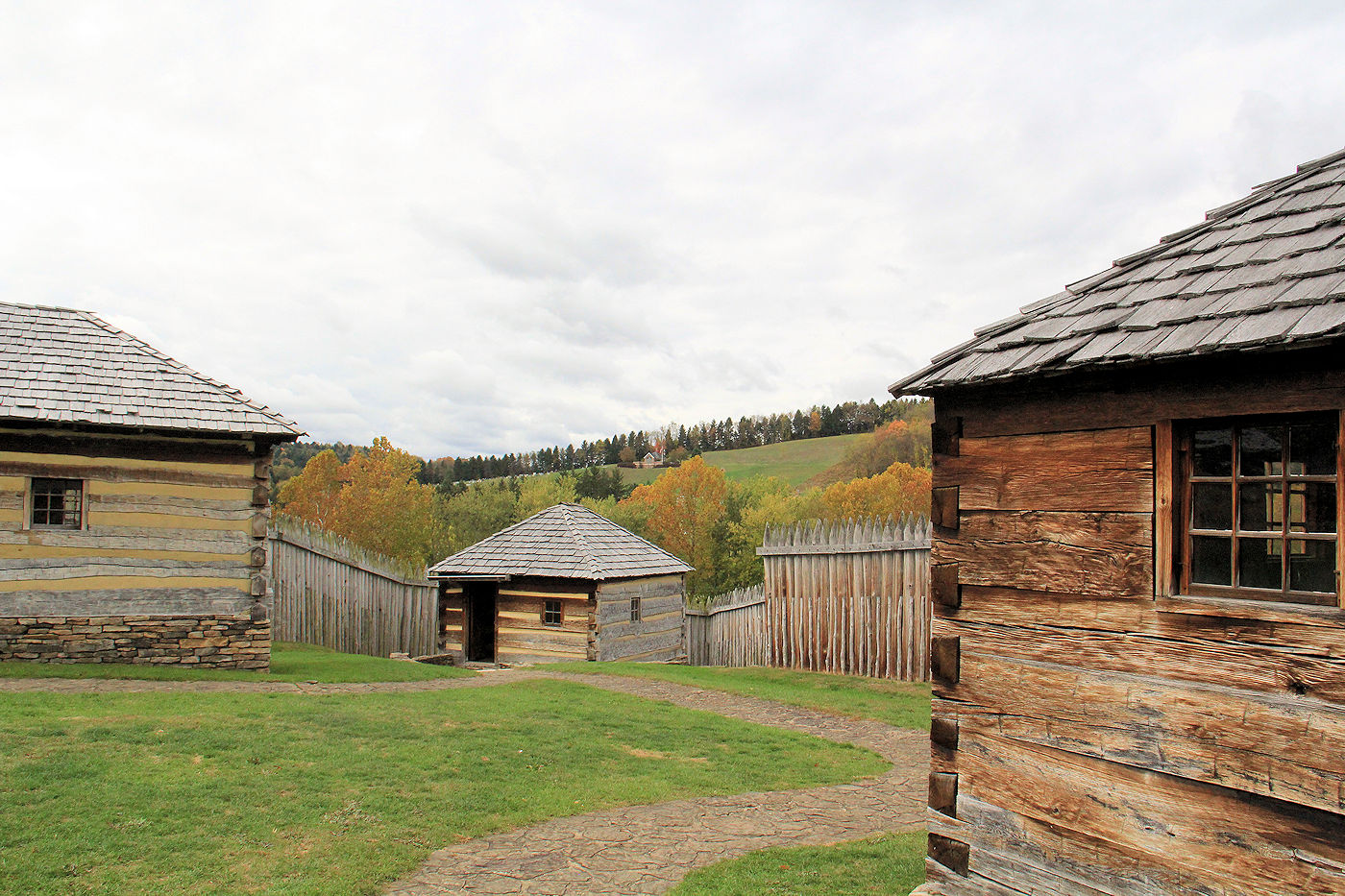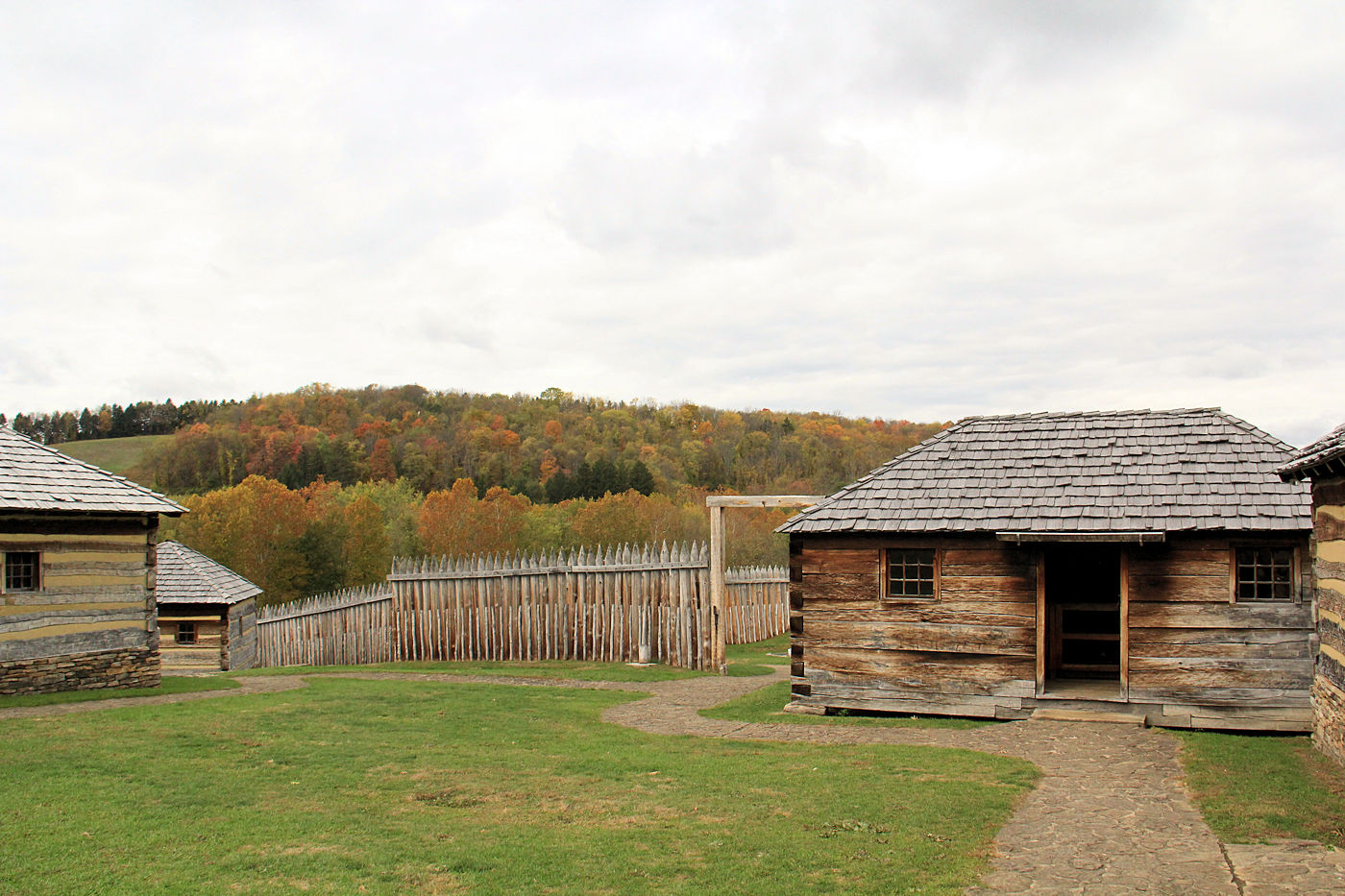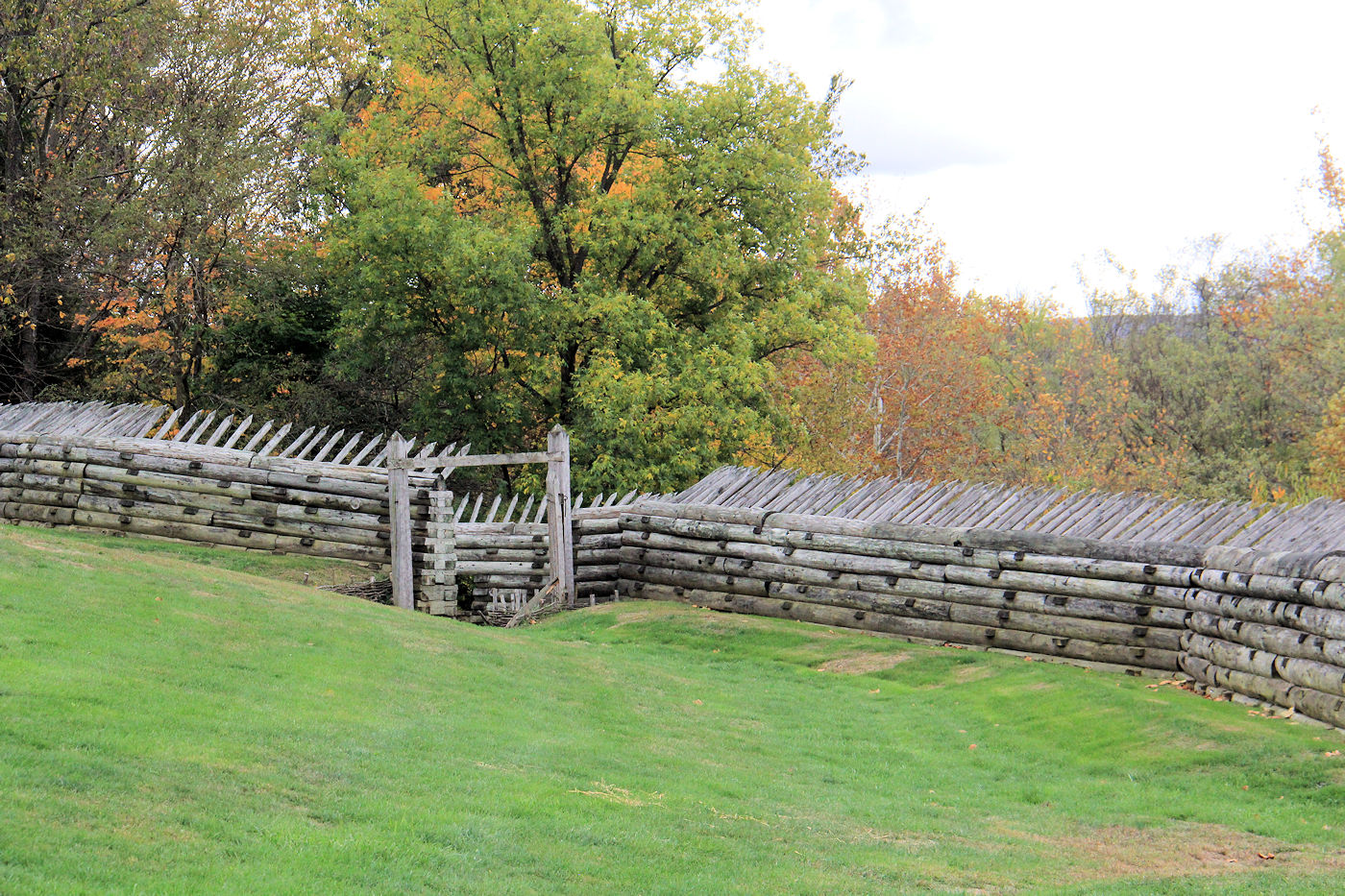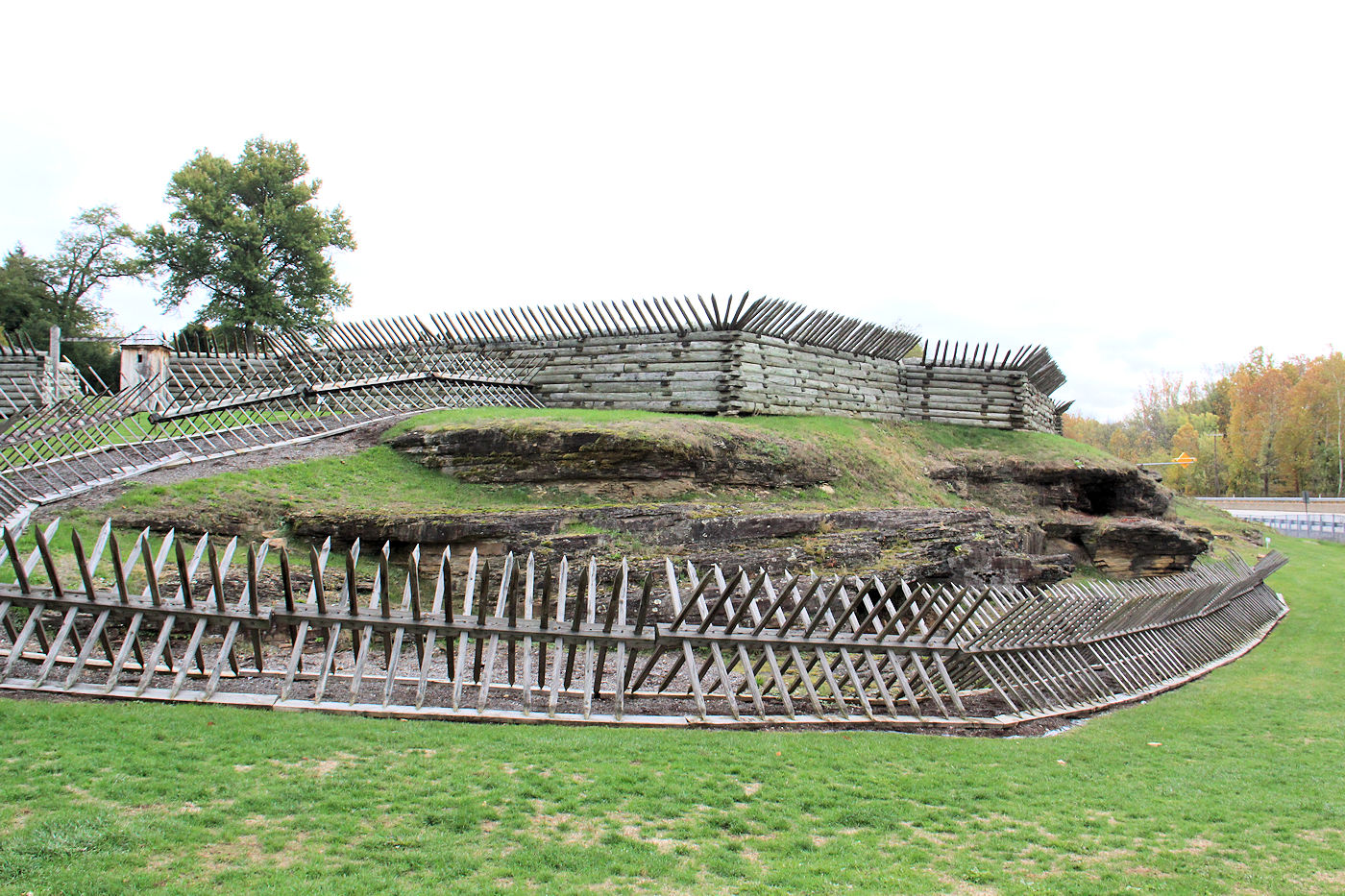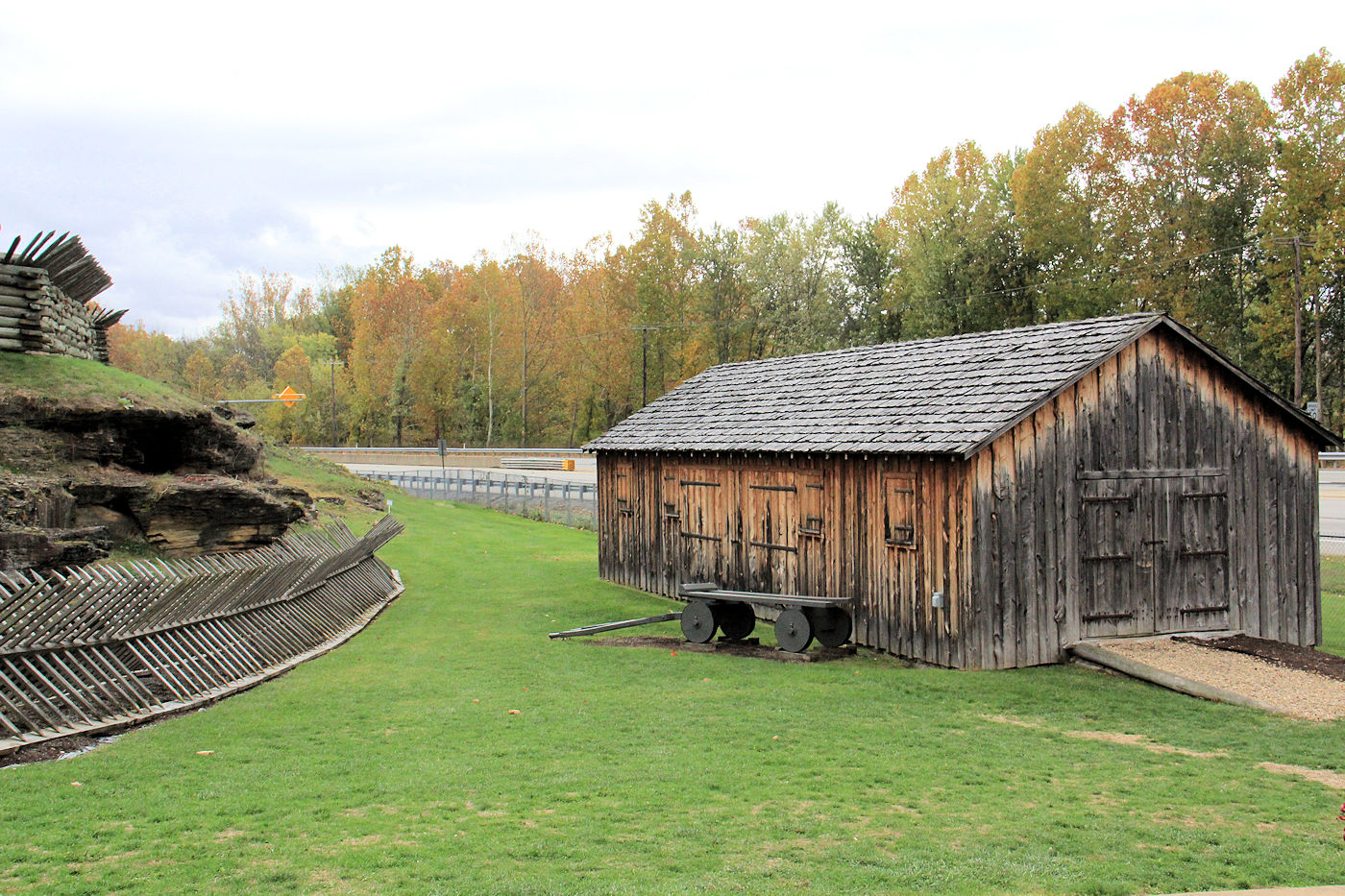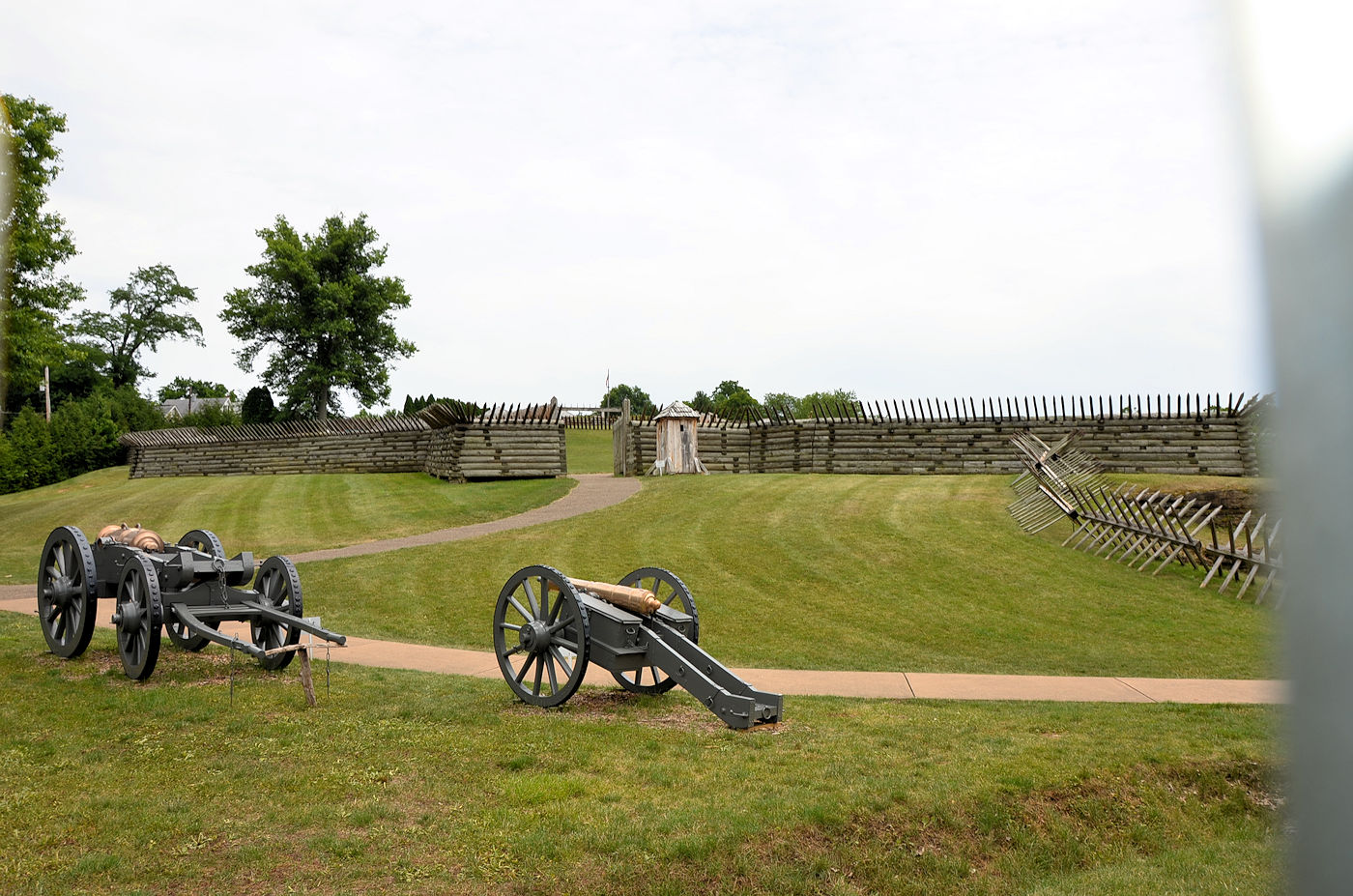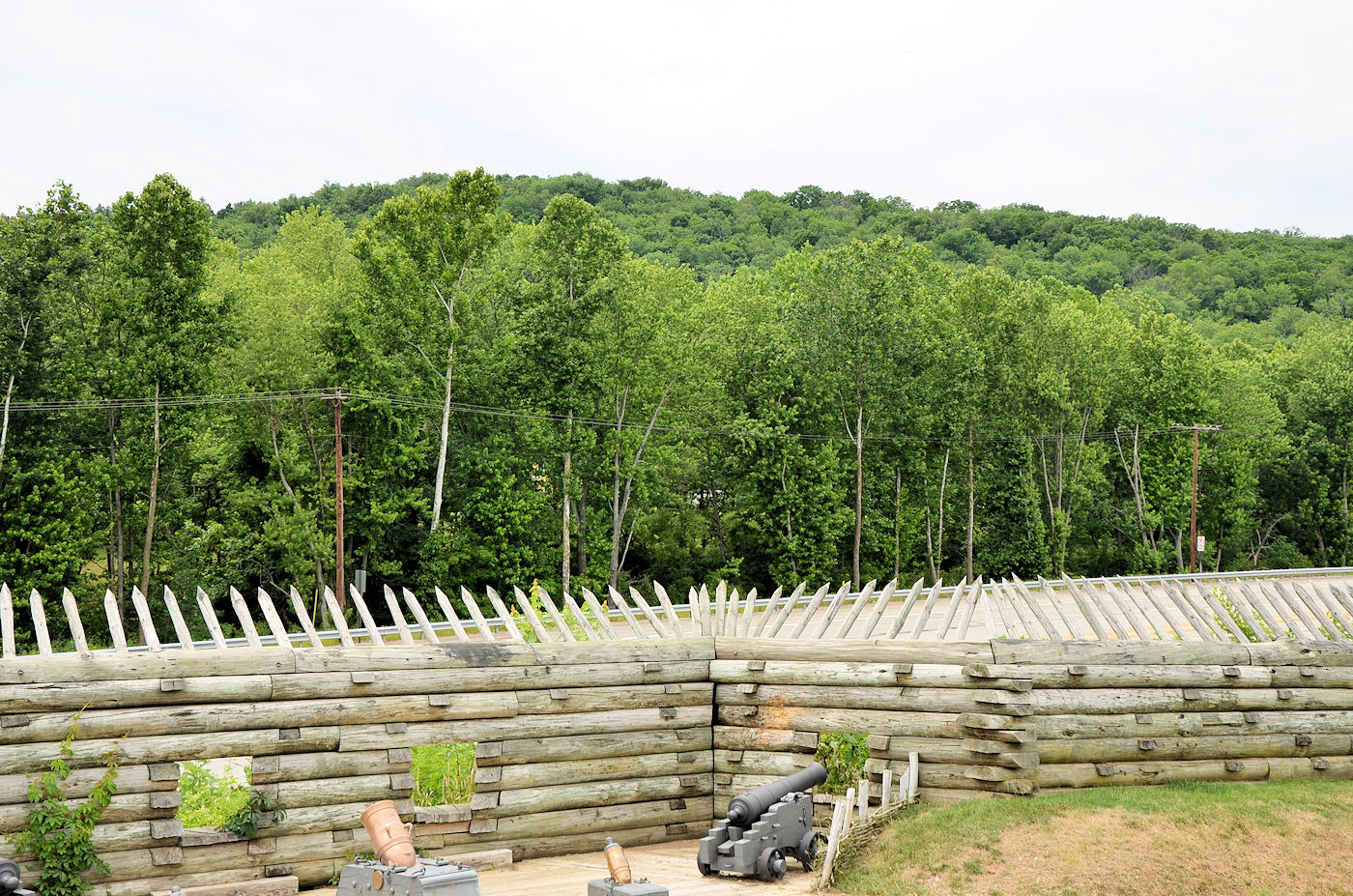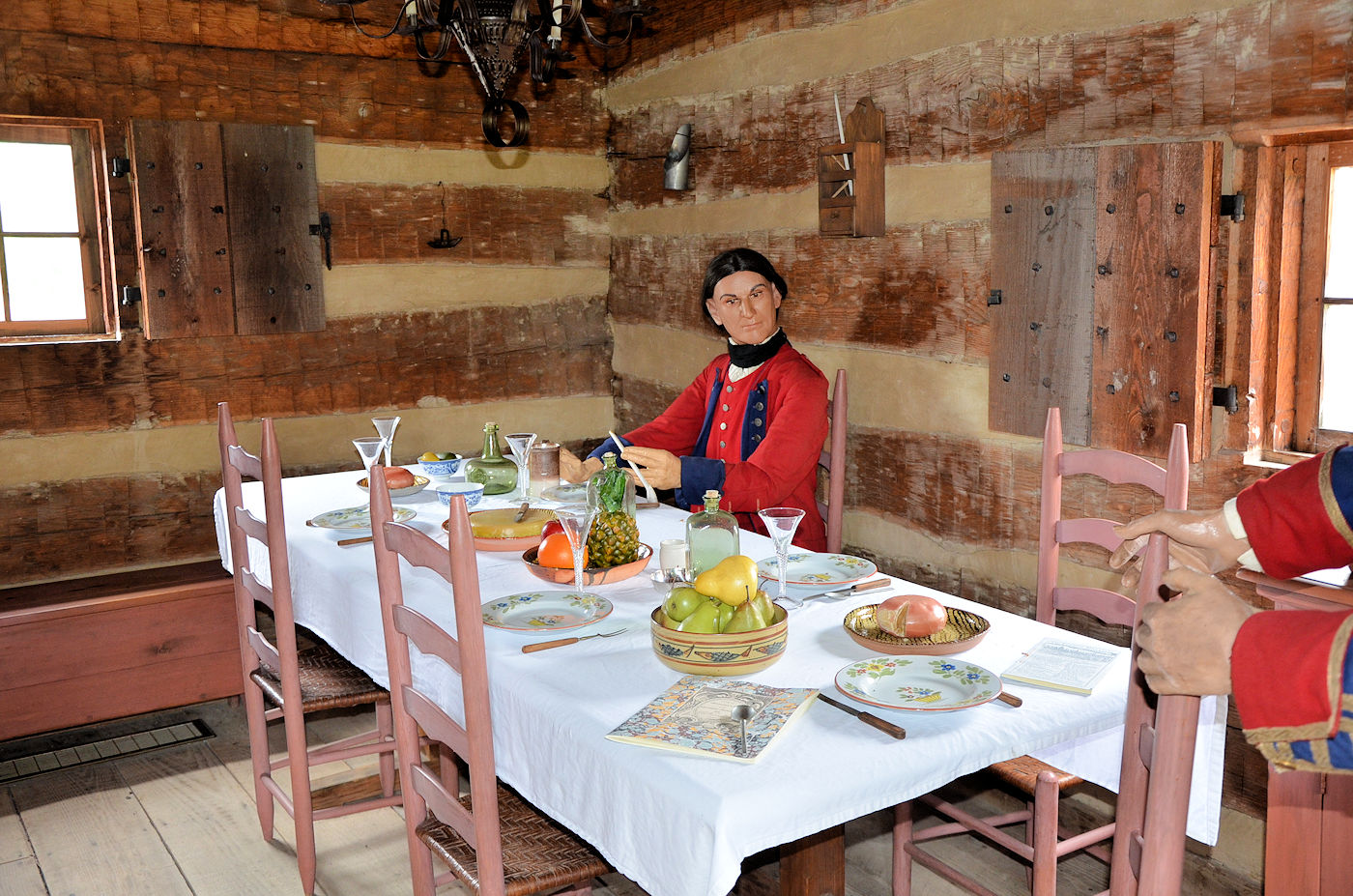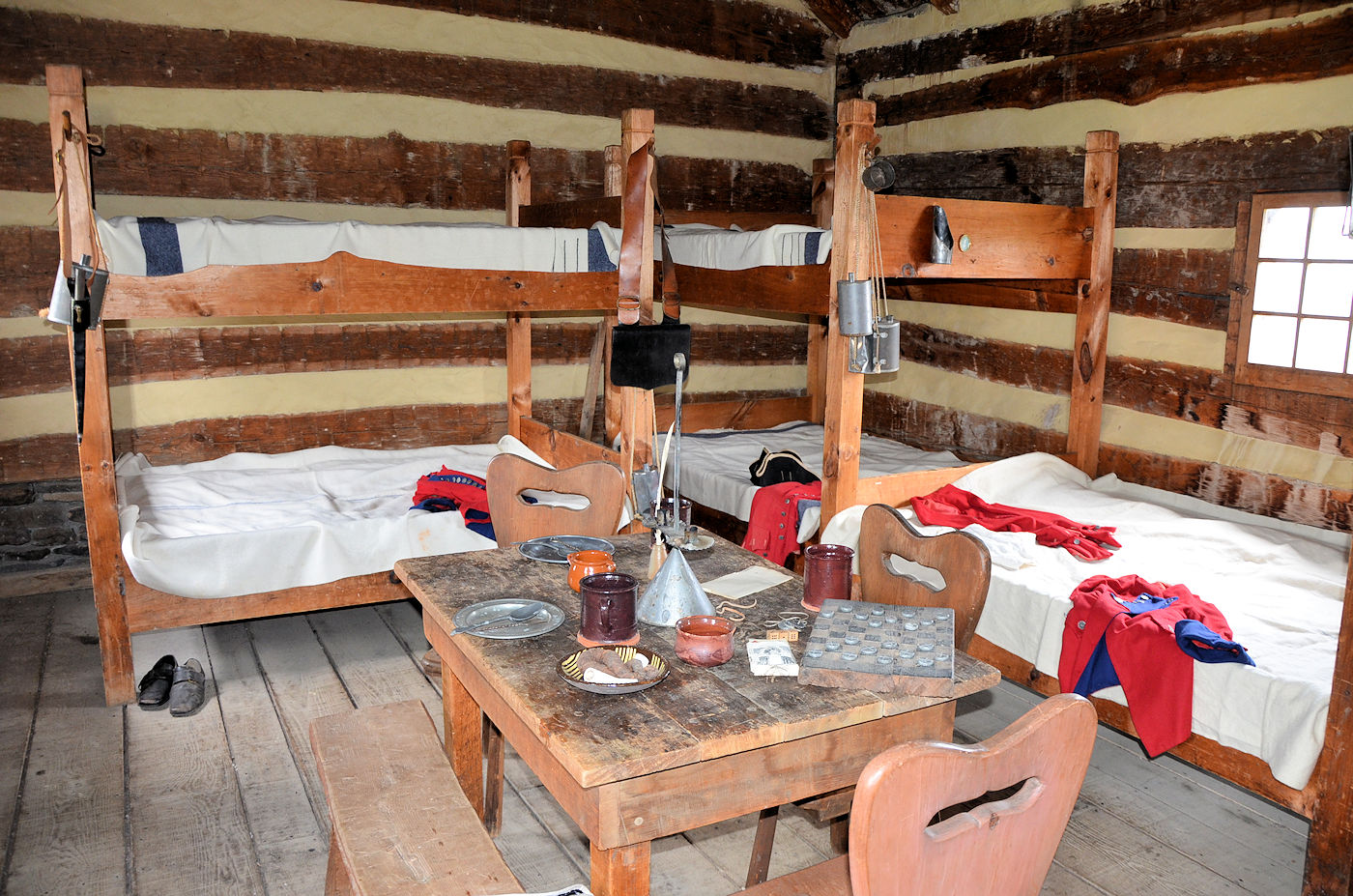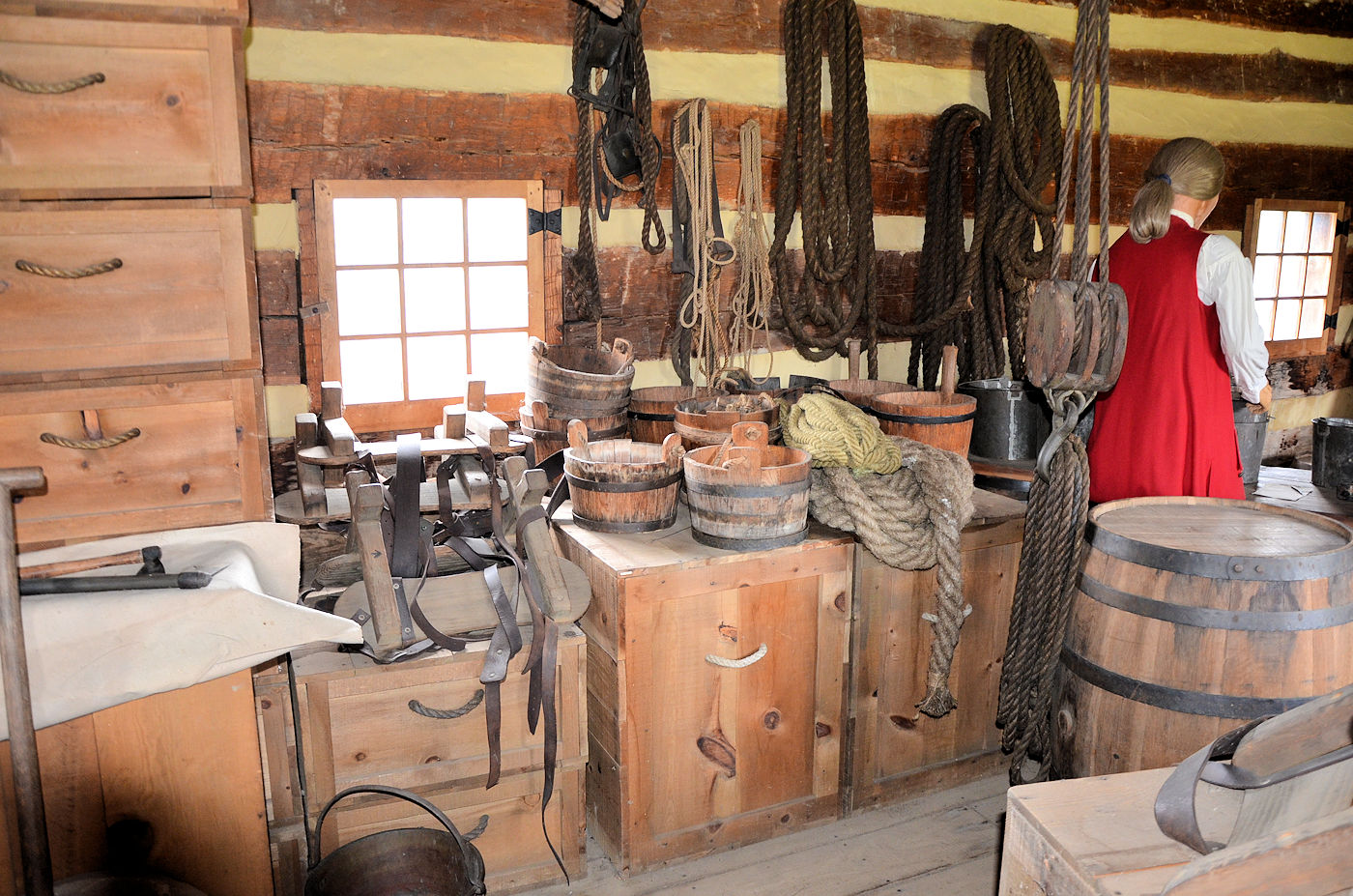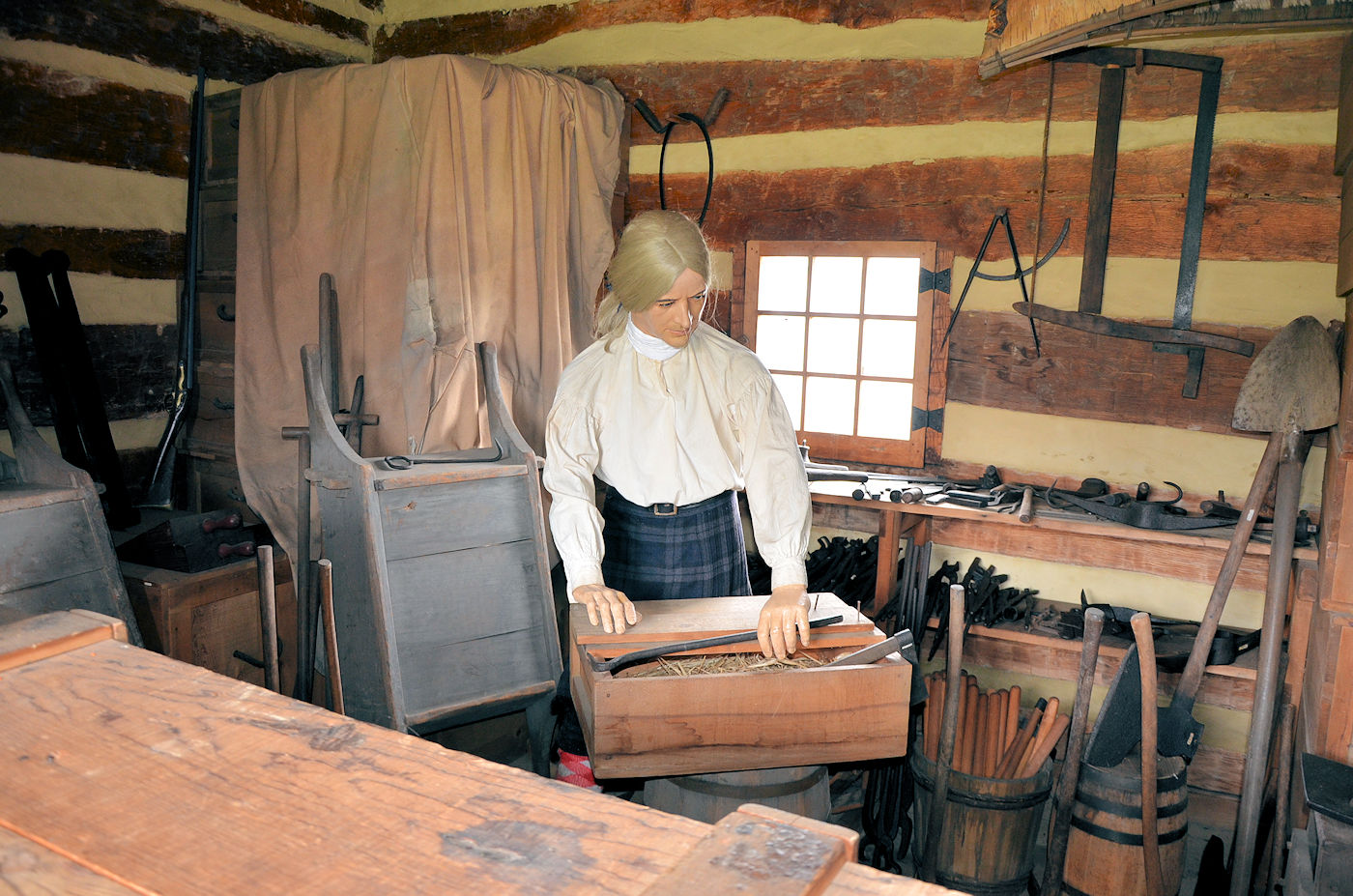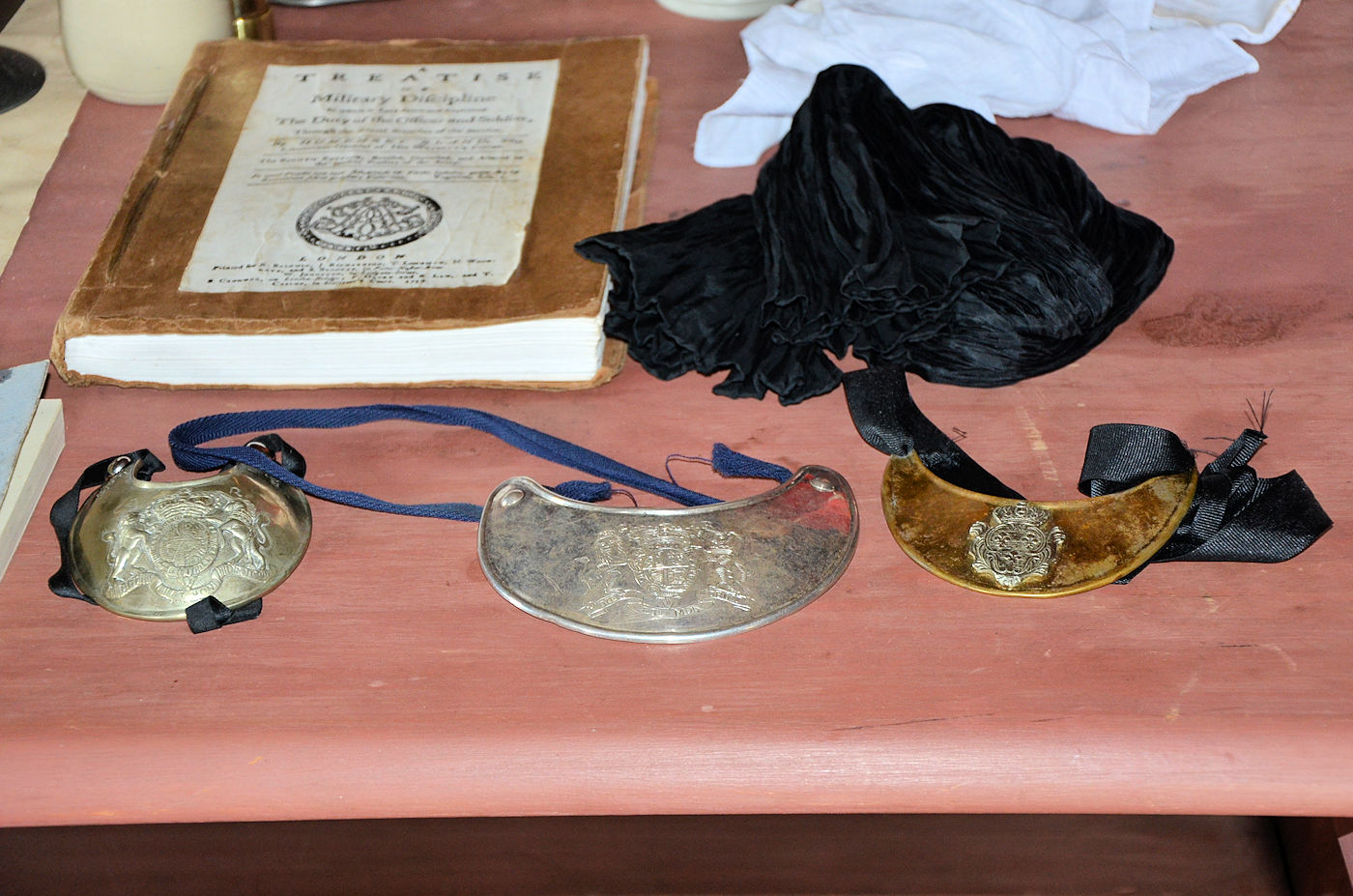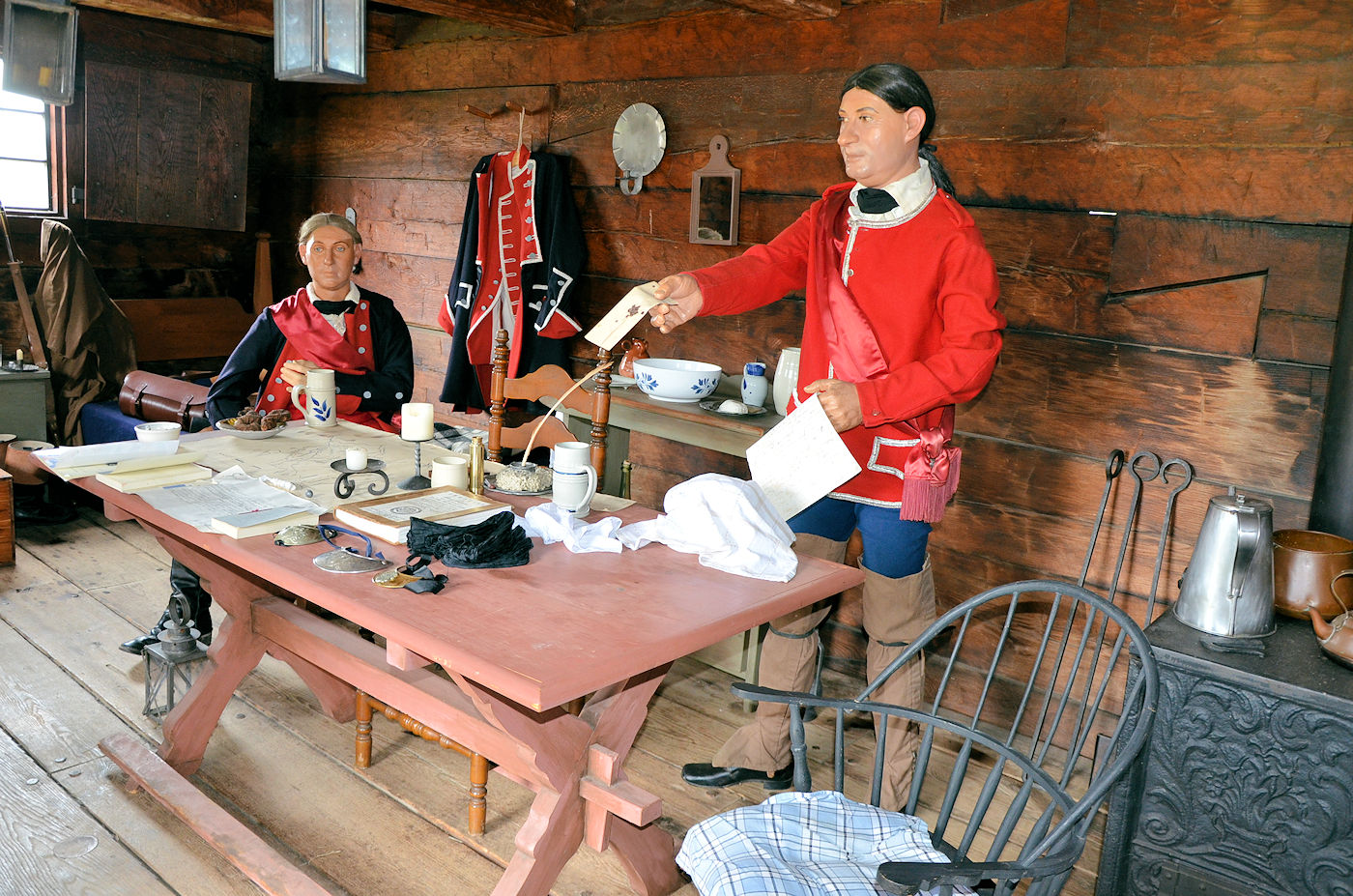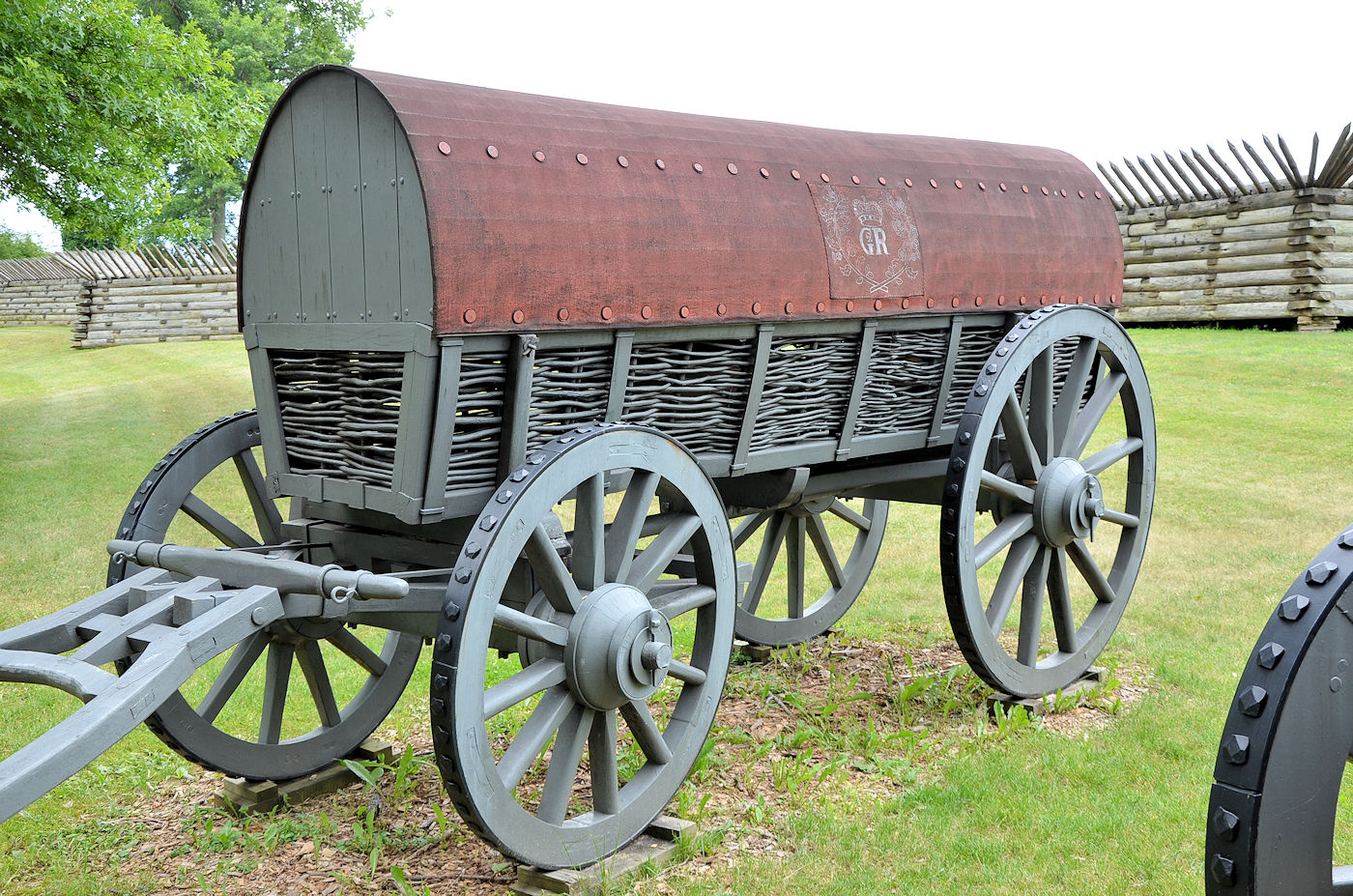

History of Fort Ligonier
French & Indian War British Fortification in Ligonier, PA
Credit Above Photo: , Fort Ligonier, CC BY-SA 2.0, via Wikimedia Commons
History of Fort Ligonier
French & Indian War British Fortification in Ligonier, PA
Credit Above Photo: Fort Ligonier, CC BY-SA 2.0, via Wikimedia Commons
Fort Ligonier is a French and Indian War British fortification located in Ligonier, Pennsylvania. During the eight years that it served as a British garrison, Fort Ligonier was never taken by an enemy. It served as a post of passage to the new Fort Pitt, and during Pontiac’s War of 1763, was a vital link in the British communication and supply lines. Fort Ligonier was attacked twice and was besieged by the Native Americans, prior to the decisive victory at Bushy Run in August of that year. The fort was decommissioned from active service in 1766. Today, there is a museum next to the reconstructed fort. Inside the museum there are artifacts from the battle. An individual can take a guided tour of the fort, and on Fort Ligonier Days, the fort’s cannons are fired.[1]
In the middle of the eighteenth century, two European powers, Great Britain and France, contested ownership of the vast inner basin of North America. The resulting conflict became known in America as the French and Indian War, which developed into a global struggle for empire later called the Seven Years’ War. French victories over George Washington and Edward Braddock in 1754–55 wrested control of the strategic forks of the Ohio River (modern Pittsburgh) from the British. By 1758, General John Forbes was assigned the daunting task of seizing Fort Duquesne, the French citadel at the forks. He ordered construction of a new road across Pennsylvania, guarded by a chain of fortifications, the final link being the “Post at Loyalhanna,” fifty miles from his objective.[1]
The fort was constructed in September 1758. By late October, George Washington had arrived at Loyalhanna, but not before the defeat of a British force at Fort Duquesne on September 14, and the successful defense of Loyalhanna from a French attack on October 12. Heavily outnumbered and losers in Indian diplomacy, the French abandoned Fort Duquesne, which Forbes occupied on November 25. He designated the site “Pittsburgh” in honor of Secretary of State William Pitt. Forbes also named Loyalhanna “Fort Ligonier” after his superior, Sir John Ligonier, commander-in-chief in Great Britain.
As summer waned in 1758, the site of a new fortification was chosen by the British army that overlooked the Loyalhanna Creek. It was the last in a string of fortifications along the newly cut Forbes Road that would ultimately stretch from Philadelphia to the site of French Fort Duquesne, the ultimate objective of the Forbes Campaign. When Fort Duquesne fell to the British army in late November of 1758, construction of a new fort, Fort Pitt, began, and the land on which it rose was named Pittsburgh. Find out more about how Fort Ligonier made Pittsburgh possible as you explore the grounds of the finest reconstructed fortification from the French and Indian War.
Fort Ligonier Gallery
The People of Fort Ligonier
The Soldier
Several distinct types of armed fighting men served the British Crown during the French and Indian War and were present at Fort Ligonier. The King’s regulars were raised in the British Isles and paid by the Crown, although colonists also enlisted in the regular army. At Fort Ligonier, 1758-1766, British army regulars included the 60th Regiment of Foot (Royal Americans), the First Highland Battalion (Montgomery’s Highlanders) or the 77th Regiment of Foot, a Royal Artillery detachment, the 94th Regiment of Foot (Royal Welsh Volunteers) and the 42nd Royal Highland Regiment of Foot (Black Watch).
Provincial troops consisted of volunteers recruited, equipped and paid by individual colonies. At Fort Ligonier, these troops were from Pennsylvania and Virginia, with detachments from the “Lower Counties” (now Delaware), Maryland and North Carolina. Local militia served at the fort in 1763.
Officers and Gentlemen
Commissioned officers formed a close elite group separated by a wide gulf from the other ranks, or enlisted men, who held a position something like that of tenants. Standing between the two was a distinct class of managers: sergeants and corporals, who enforced work and discipline. Officers were entitled to extra rations to provide for guests and, for field officers, aids and staff. Young men purchased commissions in the British army, and promotion required seniority, merit, additional purchases and, often, a friend in power. Colonels of standing regiments were appointed by the King. Officers could receive special rank during service abroad. Forbes was commissioned a brigadier general “in America only”.
The Reconstruction of Fort Ligonier
Eight acres of the original site of Fort Ligonier have been preserved, with the subsurface features restored and the above-ground elements reconstructed. The inner fort is 200 feet square, defended by four bastions and accessed by three gates; inside is the officers’ mess, barracks, quartermaster, guardroom, underground magazine, commissary, and officers’ quarters. Immediately outside the fort is General Forbes’s hut. An outer retrenchment, 1,600 feet long, surrounds the fort. Other external buildings include the Pennsylvania hospital (two wards and a surgeon’s hut), a smokehouse, a saw mill, bake ovens, a log dwelling and a forge.
Fort Ligonier Buildings & Defenses
The formidable fortifications at Fort Ligonier are full-scale reconstructions on the original site where it was first built in 1758. Imagine the daily activities of the British army community – that at one point numbered over 5,000 people. Learn how the fort was designed and constructed to defend the crucial supply line that sustained that community. Marvel at the recreated artillery train and discover why it was so important in defending Fort Ligonier and going after Fort Duquesne.
Artillery Train
Based on original documents, Fort Ligonier has the finest recreated, 18th-century artillery collection in North America. It faithfully replicates the artillery train at Fort Ligonier during the Forbes Campaign of 1758. The artillery was very important in defending the fort when it was attacked on October 12, 1758, and would have been used to put Fort Duquesne under siege if it had remained occupied by the French and their Native American allies.
Powder Magazine
The only original feature that remains from the 18th century, the remains of the powder magazine were discovered by archaeologists and reconstructed. Built in 1759, the original floor can still be seen by descending a steep entrance to the magazine.
Pennsylvania Hospital Ward
A limited number of women, usually soldiers’ wives, were permitted to follow the army during the French and Indian War, as long as they worked for the army. The hospital often had women assigned to nursing duty to care for sick and wounded soldiers. Find out more about women’s roles and medical care in the British army. See why this hospital ward was located outside of the protective walls of Fort Ligonier.
Forbes’s Hut
General John Forbes was in charge of the 1758 Forbes Campaign to take the French stronghold at Fort Duquesne. Take a seat at his desk and imagine the immense responsibility of coordinating and supplying an army of thousands as it moved westward across the wild frontier and mountainous terrain of colonial Pennsylvania.
Historic Reenactments
Fort Ligonier hosts talented and passionate living historians who bring the fort to life in many different ways. From the annual commemoration of the October 12, 1758 attack on Fort Ligonier to the Memorial Day 18th Century Military History Weekend, there are several opportunities to experience the sights, sounds and smells of 1758 three centuries ago.
18th Century Military Encampment
Learn about the important connection between the Seven Years’ War and the American Revolution at 18th Century Military History Weekend. This exciting timeline event occurs each Memorial Day Weekend (Saturday-Sunday) and includes reenactment units from the global Seven Years’ War as well as those from the Revolutionary War. Visit their camps and watch living history demonstrations throughout the weekend. Regular Admission.
Fort Ligonier Days
An annual event since 1960, Fort Ligonier Days is a town-wide festival that commemorates the October 12, 1758 attack on Fort Ligonier. Fort Ligonier’s grounds are filled with the sights, sounds and smells of 1758. Along with visiting the French, British, and American Indian camps, visitors can also witness living history demonstrations throughout the weekend (Saturday-Sunday). Regular Admission.
The Fort Ligonier Museum: Historical Perspective
Pontiac’s War (1763-1765)
Named for Pontiac, an Ottawa leader, this pan-Indian uprising quickly spread throughout the Great Lakes and into the Ohio Valley. Pontiac had been influenced by Neolin, a Delaware prophet, who called for American Indians to separate from whites and return to their traditional way of life. Beginning with Detroit in the spring of 1763, attacks were made on British garrisons taken over from the French. By the summer of 1763, every fort west of the Allegheny Mountains had been taken except Detroit, which remained under siege. The forts in the Ohio Valley also fell or were under siege. In addition to attacking military garrisons, the pan-Indian uprising also targeted traders and settlers. Some were killed while others were taken captive to be adopted.
Step Into History to the Year 1758
A time before computers or electricity, planes, trains, or automobiles, when women had few rights or options, slavery was legal, Pennsylvania was part of the global British Empire, and a young George Washington fought with the British army, when Pittsburgh was called Fort Duquesne and was controlled by the French, and the Ohio Valley was a vast, wild frontier. Journey back in time and experience the fascinating story of Fort Ligonier.
French and Indian War (1754-1763)
The North American theatre of the global Seven Years’ War, the French and Indian War was fought between Great Britain and France along with associated American Indian allies as well as colonial troops from British North America and New France. The war was fought over the control of land and trade, specifically the area of the Ohio River Valley. The French surrendered Canada to the British in September of 1760.
Pontiac’s War (1763-1765)
Named for Pontiac, an Ottawa leader, this pan-Indian uprising quickly spread throughout the Great Lakes and into the Ohio Valley. Pontiac had been influenced by Neolin, a Delaware prophet, who called for American Indians to separate from whites and return to their traditional way of life. Beginning with Detroit in the spring of 1763, attacks were made on British garrisons taken over from the French. By the summer of 1763, every fort west of the Allegheny Mountains had been taken except Detroit, which remained under siege. The forts in the Ohio Valley also fell or were under siege. In addition to attacking military garrisons, the pan-Indian uprising also targeted traders and settlers. Some were killed while others were taken captive to be adopted.
Hours of Operation:
- Monday-Sunday: 10:00am-5:00pm Open year round.
- Open December through March – Fridays, Saturdays and Sundays – Museum only.
- The museum will be open Christmas Week – December 26, 27, 28, 29 & 30
- The museum will be closed on Thanksgiving, Christmas & Christmas Eve, December 31, and January 1.
Location & Contact
Address: 200 South Market Street, Ligonier, Pennsylvania 15658
Email & Phone: office@fortligonier.org | 724.238.9701
Website
Select 18th-19th Century Historic Reenactor, Rendezvous, Shooter & Camp Products from Crazy Crow
Whatever your historic reenactor needs (other than guns), Crazy Crow Trading Post has it! As the largest supplier of Native American Indian crafts and craft supplies (which are what rendezvous-lovers use as well) we have everything for all types of mountain man clothes and gear. From head to foot, we can outfit you (or help you make your own) to get you ready for your first (or fifty-first) mountain man rendezvous or black powder shooting event. We also supply French & Indian War, American Revolutionary War, War of 1812, and American Civil War reenactors as well.
18th & 19th Century American Historic Reenactor & Rendezvous Camp Central: We’re also your historic reenactor, rendezvous & primitive camping supply center too. From cast iron firetools and cookware to wedge tents and a great selection of personal gear, we’ll have everything to make your stay at the French & Indian War, Revolutionary War, War of 1812, rendezvous, buckskinner, voyageur, Civil War or just your own primitive camping more authentic and enjoyable.
Rendezvous & Historic Reenactment Articles
Rendezvous & Historic Reenactment Resources
Current Crow Calls Sale
March – April
SAVE 10%-25% on popular powwow, rendezvous, historic reenactor, bead & leather crafter supplies. Save on many of our most popular items such as Colonial Clothing: Waistcoats, Knee Breeches & Frockcoat, Missouri River Deluxe Hunting Bags, Readymade Drumsticks, Powwow Drums, Hand Drum Kits, Smoked Color Buckskin, Bison Leather, Trekker Boots and other Colonial Shoes for men and women, Jingles & Lids, Stainless Steel Blades with Guards, Polished Steer Horns, Oval Chevron Beads, Lance Heads, River Cane Flute, Plains Hard Sole Moccasin Kits, Southwest Shoulder Bags, Traditional Serapes, Beaded Cinch Top Bag, Beaded Backpack & more!.

